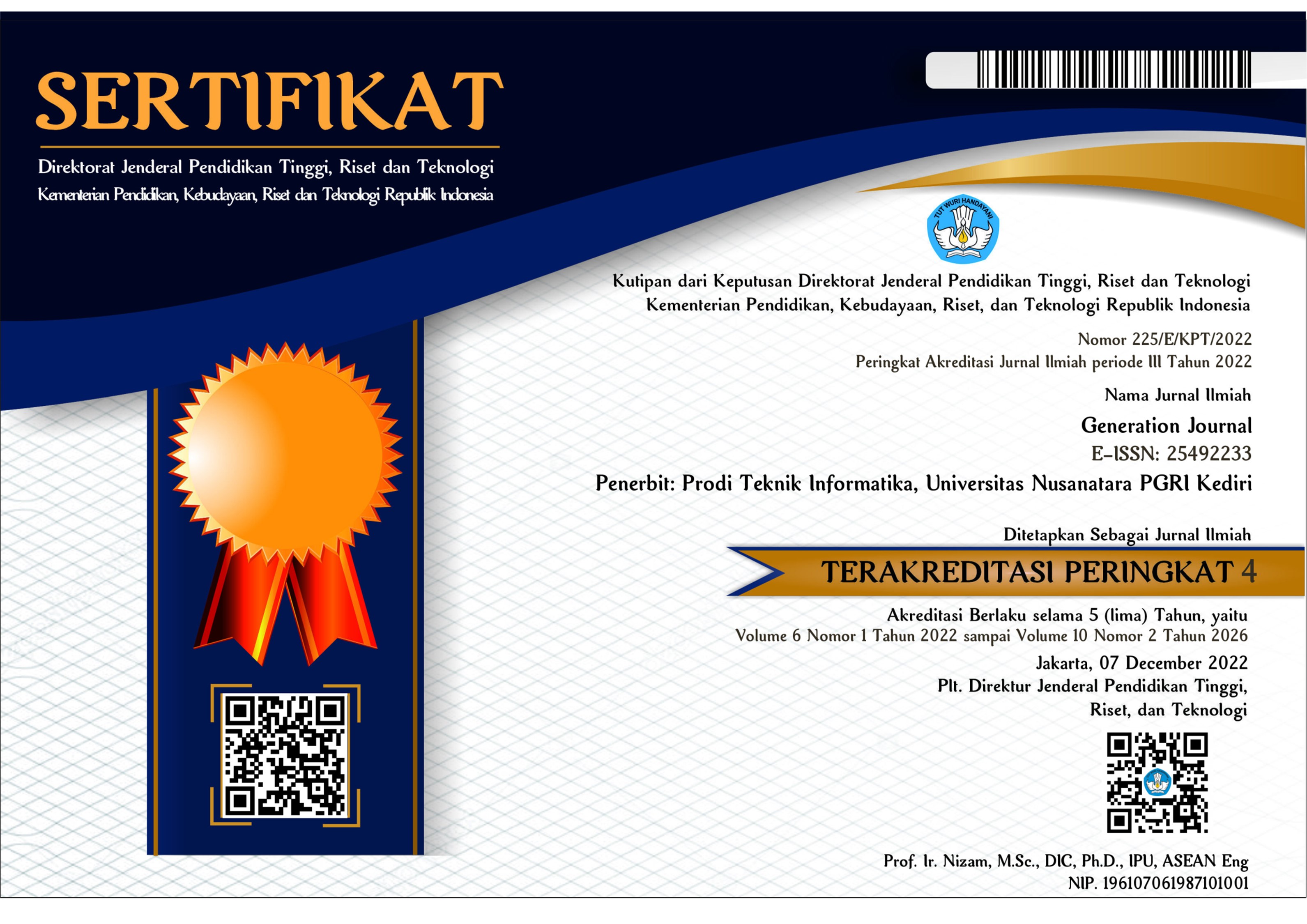Perbandingan Algoritma Naive Bayes dan Decision Tree(C4.5) dalam Klasifikasi Dosen Berprestasi
DOI:
https://doi.org/10.29407/gj.v7i1.19797Keywords:
categorization, decision tree, k-fold cross validation, lecturers, naive bayesAbstract
Abstract – Enhancing the execution of Tri Dharma for lecturers is one of the factors in obtaining and sustaining the level of universities with good institution achievement. The Rectorate should exercise consideration while making a decision to reward lecturers who do very well. The information was gathered through speaking with members of the rectorate staff to classify lectures at Sebelas Maret University. In this study, accuracy results in the classification based on lecturers' accomplishments will be compared. International and national publications, education level, the length of doctoral studies, becoming an associate professor, and the length of certification as a lecturer are the features considered in the classification. To categorize lecturers according to their accomplishment, the algorithms Naive Bayes and Support Vector Machine were applied. 350 records of training data and 130 records of testing data total 500 records in this study. From 2018 to 2021, the study was carried out at Sebelas Maret University. The accuracy value obtained from 10-fold cross validation the testing using the Naive Bayes method is 94,80%, while the accuracy value obtained from the testing using the Decision Tree is 95,80%.
References
Pemerintah RI, “Undang-undang Republik Indonesia Nomor 14 Tahun 2005 tentang Guru dan Dosen,” Prod. Huk., 2005.
K. Riset, P. Tinggi, D. Jenderal, S. Daya, and P. Tiggi, Direktorat Sumber Daya, Direktorat Jenderal Pendidikan Tinggi. 2019. [Online]. Available: https://repositori.kemdikbud.go.id/23050/1/dosen-berprestasi-2019.pdf
A. Muslim,M.,A.,Prasetiyo, Budi., M, E. L.H., H, A.J., Mirqotussa’adah., R, S.H., Nurzahputra, “Data Mining Algoritma C4.5,” 2019, Accessed: Feb. 09, 2023. [Online]. Available: http://lib.unnes.ac.id/33080/6/Buku_Data_Mining.PDF
A. P. Wibowo and S. Hartati, “Sistem Klasifikasi Kinerja Satpam Menggunakan Metode Naїve Bayes Classifier,” INOVTEK Polbeng - Seri Inform., vol. 1, no. 2, 2016, doi: 10.35314/isi.v1i2.138.
A. Rohani, M. Taki, and M. Abdollahpour, “A novel soft computing model (Gaussian process regression with K-fold cross validation) for daily and monthly solar radiation forecasting (Part: I),” Renew. Energy, vol. 115, 2018, doi: 10.1016/j.renene.2017.08.061.
B. Sugara, D. Adidarma, and S. Budilaksono, “Perbandingan Akurasi Algoritma C4.5 dan Naïve Bayes untuk Deteksi Dini Gangguan Autisme pada Anak,” J. IKRA-ITH Inform., vol. 3, no. 1, 2019.
S. J. S. Tyas, M. Febianah, F. Solikhah, A. L. Kamil, and W. A. Arifin, “Analisis Perbandingan Algoritma Naive Bayes Dan C.45 Dalam Klasifikasi Data Mining Untuk Memprediksi Kelulusan,” J. Teknol. Inf. Dan Komun., vol. 8, no. 1, 2021.
J. Han, M. Kamber, and J. Pei, Data Transformation by Normalization. 2011. doi: 10.1016/B978-0-12-381479-1.00001-0.
F. Syahputra, H. Hartono, and R. Rosnelly, “Penerapan Algoritma C4.5 Dalam Memprediksi Ketersediaan Uang Pada Mesin ATM,” J. MEDIA Inform. BUDIDARMA, vol. 5, no. 2, 2021, doi: 10.30865/mib.v5i2.2933.
E. A. Widjojo, A. Rachmat C, and R. G. Santosa, “Implementasi Rocchio’s Classification dalam Mengkategorikan Renungan Harian Kristen,” J. Ultim., vol. 6, no. 1, pp. 1–8, 2014, doi: 10.31937/ti.v6i1.325.
E. Prasetyo, Data Mining Mengolah Data Menjadi Informasi Menggunakan Matlab. Penerbit ANDI, 2014.
O. Nasraoui, Web data mining, vol. 10, no. 2. 2008. doi: 10.1145/1540276.1540281.
Downloads
Published
Issue
Section
License
Authors who publish with this journal agree to the following terms:
- Copyright on any article is retained by the author(s).
- The author grants the journal, the right of first publication with the work simultaneously licensed under a Creative Commons Attribution License that allows others to share the work with an acknowledgment of the work’s authorship and initial publication in this journal.
- Authors are able to enter into separate, additional contractual arrangements for the non-exclusive distribution of the journal’s published version of the work (e.g., post it to an institutional repository or publish it in a book), with an acknowledgment of its initial publication in this journal.
- Authors are permitted and encouraged to post their work online (e.g., in institutional repositories or on their website) prior to and during the submission process, as it can lead to productive exchanges, as well as earlier and greater citation of published work.
- The article and any associated published material is distributed under the Creative Commons Attribution-ShareAlike 4.0 International License














